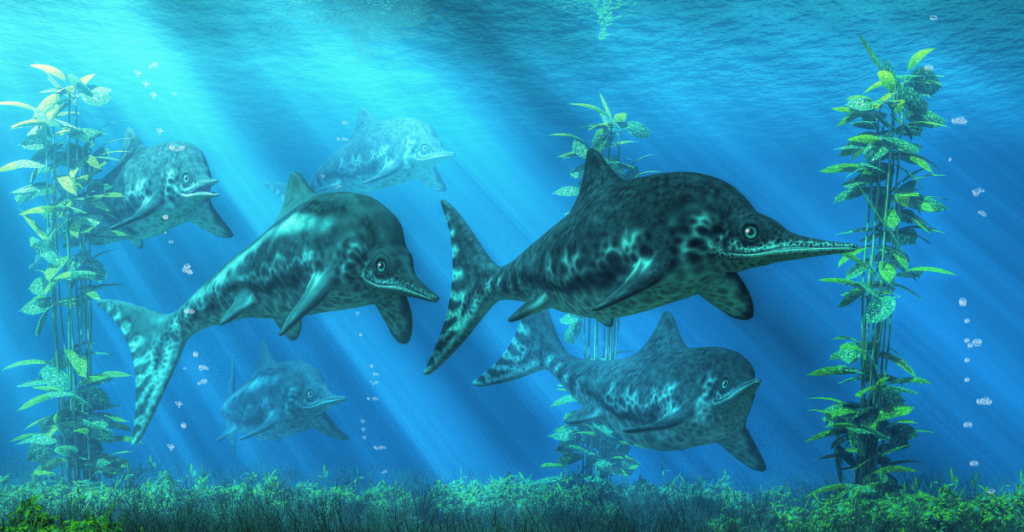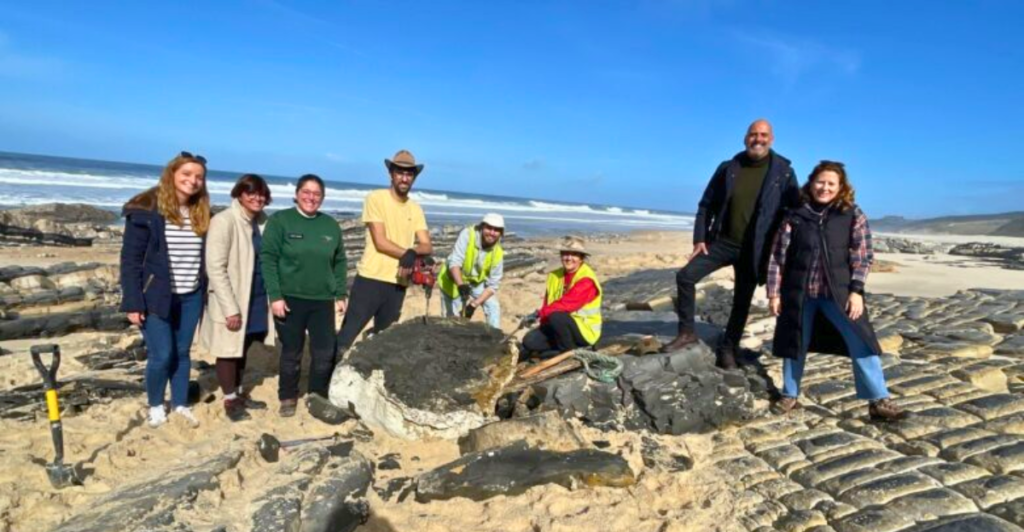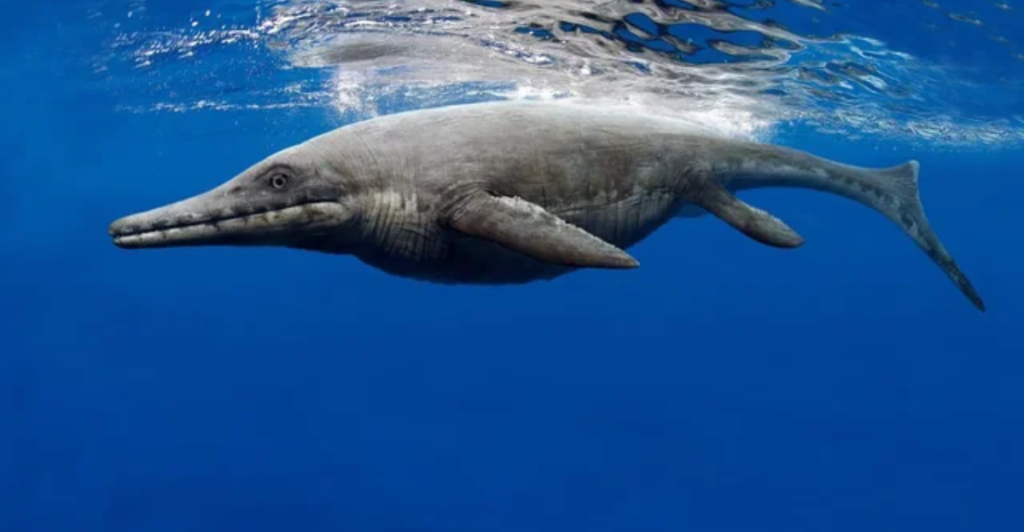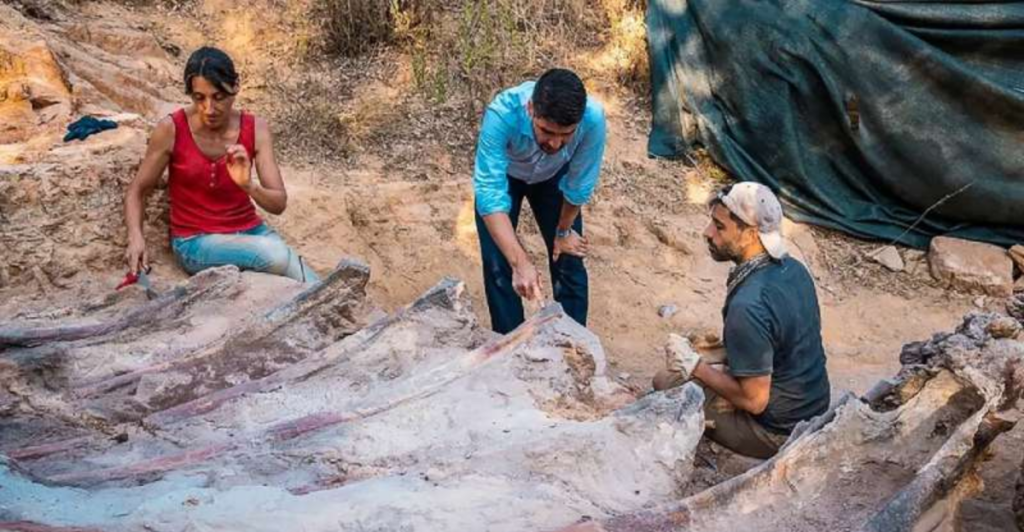
2021, and something historic landed on the Portuguese coast. The beaches along Água de Madeiros were kissed by waves, and local teacher Isabel Morais Roldão stumbled upon something that would rewrite what we know about prehistoric sea animals.
It’s a new species of marine reptile from the ichthyosaur order. The animal existed in oceans more than 190 million years ago, in the Early Jurassic. This intrigued scientists and sparked a wave of interest in paleontology.
But most notably, it’s the first one of its kind found on the Iberian Peninsula. The find sheds new light on the various animals that previously inhabited Earth’s oceans.
Discovery of Água de Madeiros

A keen eye and a beach stroll set the wheels of discovery in motion. Isabel Morais Roldão, a school teacher from Leiria, Portugal, was exploring the Água de Madeiros beach when she found a fossilized skull.
She discovered a well-preserved fossilized skull of a sea reptile—a group of fish-like reptiles known as the ichthyosaurs. They ruled the oceans several million years before the time of the dinosaurs. Roldão was aware that she had found something significant and handed her report over to the Lourinhã Museum immediately.
There, the researchers carefully excavated and studied the fossil. It marked the beginning of paleontological discovery, unveiling a part of Earth’s distant past that science was previously unaware of.
Gadusaurus aqualigneus Discovery

The fossil was assigned to a previously unknown form of ichthyosaur, which was later named Gadusaurus aqualigneus. Gadus is a Latin term for cod, and therefore the name captures the fish-like look of the reptile.
The name “Aqualigneus,” or “wood of the water,” was chosen in view of where it was found, Água de Madeiros Beach. This new ichthyosaur species is a deserving member of the ichthyosaur family.
With this latest discovery, scientists have gained more knowledge about the diversity of marine reptiles in the Early Jurassic period. Moreover, it marks an important milestone in research on the evolutionary patterns and adaptations of marine reptiles in the ancient sea.
Secret of the Skull Revealed

Gadusaurus aqualigneus is said to have a diminutive-sized skull. Measuring 35.2 cm, the skull contains unusual features. One peculiar feature of the skull is that Gadusaurus aqualigneus has a massive nasal foramen—a larger foramen compared to other ichthyosaurs.
It also contains grooves around its bones, which is an unusual feature typical in other animals. The researchers also stated that the sutures of the skull had not yet fused completely, which means that this specimen was either juvenile or subadult.
These observations provide scientists with insights into ichthyosaur development and clues about early life for such an old type of life.
A Glimpse into Early Jurassic Oceans

Gadusaurus aqualigneus existed over 190 million years ago during the Early Jurassic. Back then, oceans on Earth overflowed with such enormous variety of sea creatures and icthyosaurs were among the leading predators.
Aquatic reptiles developed from their terrestrial ancestors adapted their bodies for an aquatic environment with hydrodynamism in form, their heads evolved to look elongated, and they had a powerful tail.
The finding of Gadusaurus aqualigneus in the Água de Madeiros Formation uncovers a captivating new episode in our life history on these ancient seas. The site itself, with its wealth of fossils, gives us important clues about the character of the environments which supported such diverse marine fauna during the Early Jurassic.
The Role of Citizen Science

Gadusaurus aqualigneus discovery also highlights another important aspect of paleontology today: citizen science. The professional paleontologists receive marvelous findings every once in a while, but sometimes careful observation by amateur researchers such as Isabel Morais Roldão can lead to incredible findings.
Roldão’s meticulous observation and excitement for finding allowed the experts to study the sample, which eventually proved to be a new species. This collaboration between scientists and the public helps propel paleontological discovery.
This would also explain how human must stay engaged with the natural world, and indeed how humans would be willing to seek out and rescue Earth’s paleontological gems.
The Role of the Lourinhã Museum

The Lourinhã Museum, outside Lisbon, was involved in excavating and studying Gadusaurus aqualigneus. The museum staff, after recovering the fossil, began cleaning, preparing, and examining the specimen.
It was in the museum laboratory that much scientific study was conducted and where paleontologists carefully documented their observations and performed phylogenetic analyses to further establish where the fossil belongs in the ichthyosaur tree of life.
It was also where its official description was published in Acta Palaeontologica Polonica journal. Their discoveries further push paleontology as a science and our understanding of life in the past.
Contributing to the Ichthyosaur Family Tree

Using phylogenetic analysis, Gadusaurus aqualigneus was assigned to the Baracromian clade of ichthyosaurs, a subclade that includes other sea-dwelling reptiles which are well established.
The find adds to our knowledge of the family background of ichthyosaurs, especially their Early Jurassic relatives. Ichthyosaurs comprised one of the most diverse groups of marine reptiles, and each of them evolved to fill disparate ecological niches within the Mesozoic oceans.
The ichthyosaur family tree now includes a new branch, Gadusaurus aqualigneus, which highlights the evolutionary richness of ichthyosaurs and the numerous milestones still being reached, remodeling our manner of conceiving life amidst ancient seas.
Contribution of Portugal in Paleontology

Portugal has become more famous as a site for notable fossil finds, primarily in regions like Marinha Grande and Lourinhã. The sites have long been known to contain significant paleontological deposits and are therefore of special interest to scientists who study ancient environments. The discovery of Gadusaurus aqualigneus adds to a growing body of knowledge about the marine reptiles found in these regions.
Besides ichthyosaurs, various dinosaur fossils were discovered in Portugal, making the country an even more significant location for paleontological studies. The sheer numbers of fossils in these sites still hold valuable information about life on our planet during the Mesozoic era.
The Legacy of Gadusaurus aqualigneus

This discovery of Gadusaurus aqualigneus is not just a scientific discovery—it’s a windo into an ancient world, already existing many years before humans occupied the Earth.
The unique features of this ichthyosaur are useful in helping reconstruct the evolutionary history of sea reptiles and the environments that supported them. Continued study of this fossil will surely yield further insight into the prehistoric ocean biodiversity.
This also makes us remember how important it is to preserve Earth’s paleontological heritage, so that coming generations can still discover and learn from the wonderful animals that dominated our oceans in the past.
Explore more of our trending stories and hit Follow to keep them coming to your feed!

Don’t miss out on more stories like this! Hit the Follow button at the top of this article to stay updated with the latest news. Share your thoughts in the comments—we’d love to hear from you!







